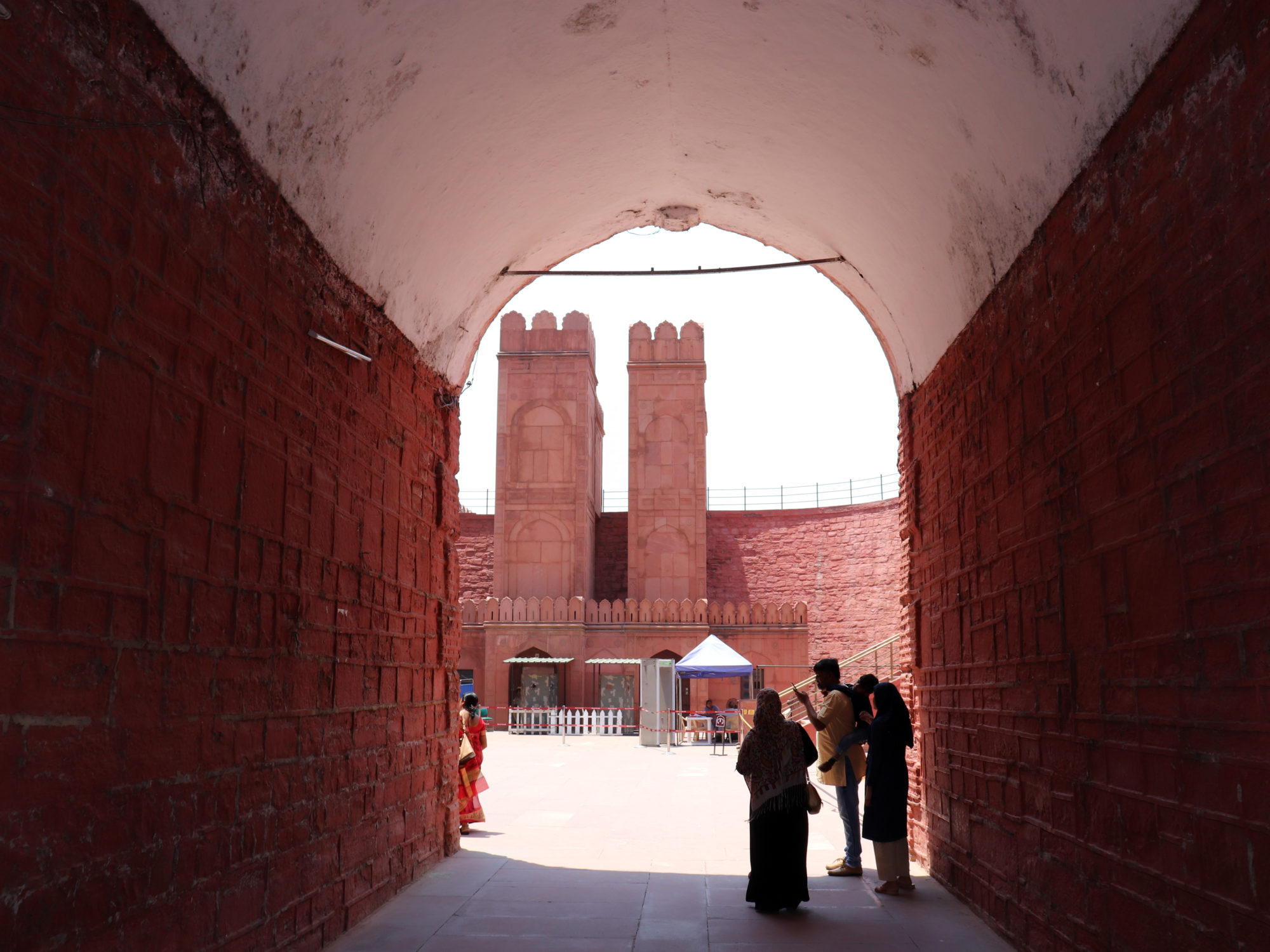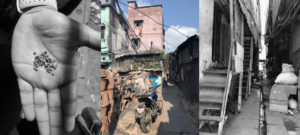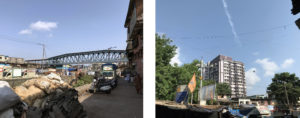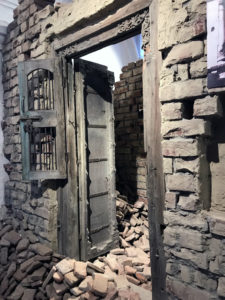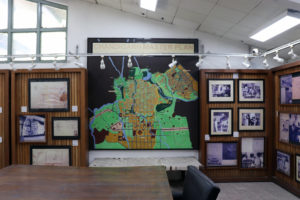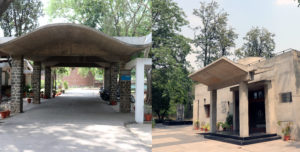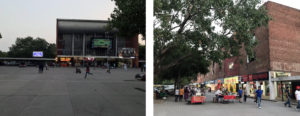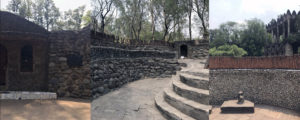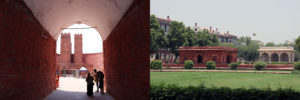Bhumika Shirole is a junior at Tulane majoring in Architecture with a minor in SISE. She is a 2018-2019 Taylor CM fellow. In 2019 she received the Changemaker Catalyst Award to research the role of Vernacular Architecture in retaining cultural identities, reducing costs and environmental impact in India. This research ties into her interest in Human Centered Design and Public Interest Design.
In developing countries, modern architecture is becoming increasingly ubiquitous due to accelerating globalization. Most of the new structures built in cities are built using western construction techniques and materials such as concrete, steel and glass. This leads to a loss of native culture and identity. Furthermore, the materials and techniques used are not always efficient in accordance with the climate.
Out of all the annual carbon dioxide consumptions, 39% comes from building operations and construction. Glass and steel buildings do not have significant thermal mass, which is the capacity of a material to store thermal energy and release it. This is why modern structures require active cooling systems to be installed which cause significant energy drain. Vernacular structures are designed to accommodate local climatic conditions. The implementation of native building techniques can lower costs significantly and can be used as a tool for design. They use materials that are locally sourced and thus reduce transportation costs.
During the spring semester of 2019, I was taking architecture classes that explored topics related these concepts and I developed a curiosity to know more about how architecture can be designed more efficiently for local climates to retain cultural identities, reduce costs and save energy. All of these reasons compelled me to study the vernacular techniques used in Indian architecture by visiting sites in rural areas and cities in the country over the summer.
My first destination was Mumbai, a city in the state of Maharashtra on the western coast of India. While there I visited a community called Dharavi, guided by a local student. Dharavi is the biggest slum in the world that spans over 535 acres in the heart of the city and is bustling with economic activity worth more than $500 million. Over time the residents have developed urban villages that have strong community ties that relate to the economic activity and architecture.
From left to right: The different materials used in a typical house in Dharavi. A typical street in the community.
There are recycling businesses, fashion and textile markets, co-operative movements and non-profits amongst others. They live in clusters of dense housing where they develop businesses and networks with neighbors. Various markets and industries are set up in close proximity. Most people there have migrated from villages into this dynamic urban environment. For years the community was left to develop independently by the people who migrate to it. This has lead to the area having its own style of vernacular in terms of architecture, living patterns and urban plans.
From left to right: Pellets of plastic made by a local recycling business. Kumbharwada: a community of pottery artists in Dharavi. A dense alley with businesses on the first floor and houses on the second floor.
I also got an opportunity to learn the local perspective on recent government and corporate interventions to alter the architecture and dynamic in the area. The new interventions do not accommodate for the strong sense of community that already exists in the place and instead try to construct high story buildings that will permanently change the nature of the place.
From left to right: A skywalk developed by the government. A multi-story building made by a corporate developer.
I then visited Bangalore, a city in the southern state of Karnataka. It is populated with various firms that attempt to integrate vernacular styles in the construction of modern houses. I was most fascinated by a firm called Bangalore Tile Company that sells modular ties made out of clay and brick for building facades.
My next destination was Amritsar, a city in the northwestern state of Punjab. The reason I chose to visit Amritsar is that it borders Pakistan and used to be an economic hub with strong ties to Lahore (The capital of Pakistan) before the partition of India and Pakistan. After the partition of the two countries, it lost its status as an economic hub and a significant amount of vernacular architecture is preserved. Visiting Amritsar helped me learn about vernacular Architecture in Northern India and how mass migration affected it over the years.
An installation of a house destroyed in riots during the separation of India and Pakistan.
After Amritsar I went to Chandigarh, a city that neighbors Amritsar and starkly contrasts it in terms of development and architecture after the Independence of India. While Amritsar is a historic city that had existed long before India became an independent country, Chandigarh is one of the few planned cities India. The first Prime Minister of India, Pandit Jawaharlal Nehru commissioned Le Corbusier, a Swiss Architect and Urban Planner, to plan the city in 1950. Le Corbusier is one of the pioneers of modern architecture and I wanted to learn how modern architecture and vernacular architecture intersected in Chandigarh. Concrete is a prominent material featured in Le Corbusier’s design but in Chandigarh concrete is used in conjunction with local stone and red brick with the exception of a few government buildings. Due to the planned nature of the city, there is a sense of cohesiveness throughout the fabric and architecture of the city.
The masterplan for Chandigarh displayed in Le Corbusier Center.
From left to right: Le Corbusier’s office. Entry office for the Chandigarh Capitol Complex.
Chandigarh Capitol Complex.
An old market in Chandigarh.
While in Chandigarh, I also got the opportunity to visit the Rock Garden of Chandigarh, a sculpture garden spanning 40 acres that was developed by Nek Chand Saini. He developed the garden over decades starting in 1957 and used rocks, industrial waste and recycled materials. The result represents vernacular forms, materials and building techniques.
Rock Garden of Chandigarh.
I visited Delhi, the capital of India, next. Delhi has been the capital of India for hundreds of years, when it was ruled by emperors and before India was colonized by the British. The city has a rich history of vernacular architecture and it was a great opportunity to learn how that intersects with the rapid development of the city.
Red Fort, Delhi.
Finally, I visited Kamshet, a small village in Maharashtra where I explored the vernacular style of the village and visited the site of a house developed by a civil engineer based in Pune (The nearest city to Kamshet). The house featured modern elements, complimented the vernacular style of the village and had its own water management system.
From left to right: A typical vernacular house in Kamshet. The house designed by a civil engineer from a nearby city.
I am thankful to the Taylor Center for giving me the opportunity to spend my summer doing this research. Since the time that I have started studied architecture at Tulane, I have been interested in the potential of Public Interest Design. I want to learn how to intersect my career choice with the concepts that I have learnt in my SISE classes such as human-centred design and social innovation. In my future education and practice, I am excited to develop designs that work with local context to inform the materials and building techniques used. This research has significantly contributed to this goal. I believe that there are many benefits of considering implementing vernacular architecture in construction such as affordable housing, efficient allocation of resources and reduced environmental impact and I will continue to research on this topic in the classes I take at Tulane and the thesis I will work on during my senior year.
